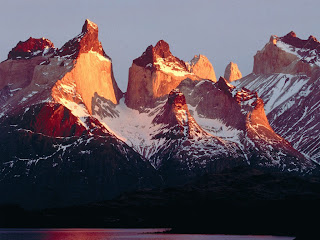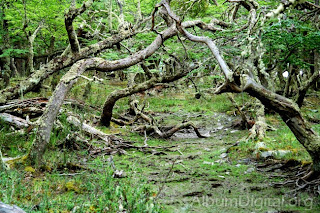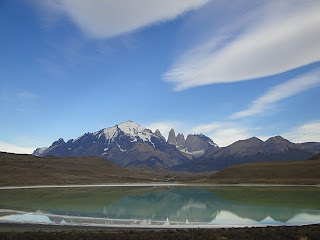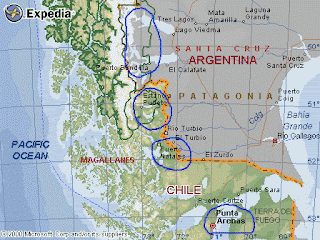The tires of my jeep crunch the tiny pebbled stones as I weave slowly down the driveway. Trees, as large as buildings, line the side of the gravel drive as if guarding a fortress. An army of twisted bark and thick-rooted foliage stand silently behind, extending for miles on end. The lime green ferns sway and dance in the light as I pass, welcoming me back. I am finally here, my favorite place on earth, The Great North Woods.
The beaming headlights slice through the black of night, proving to be the only light for miles. The lights catch eye of the only place that I will ever call home. A clearing emerges, bearing a modest timber-frame structure, adorned with a sinking wrap-around porch. The cinder block foundation crumbles gently with age into the ground, making the first two steps warp and crooked. A long picnic table sits parallel to the house, taking up more than half the porch.
The wood siding is worn and soft but bears scars and wrinkles from a long life. A clothing line droops across the entire side yard, with clothing pins randomly clinging to the rope. I step out of my car and take a deep breath in. The sweet air is fresh and carries the smell of the lake. A feeling of relief floods deep inside. I gaze upward to see thousands of sparkling lights strum across the deep black velvet sky. They are bright and clear and sit boldly in the sky, like crown jewels displayed in a high-end jewelry store. I keep my eyes fixed on the sky to allow the picture to burn into my memory. The clarity of starlight is not compromised by lights, pollution, or the hustle and bustle of city life.
The night is eerily quiet. There is no movement, and the earth is silent. I quickly reach and fidget under the driver’s seat of my car in search of my high-powered Maglite. I leave the brights on in the car and the door wide open for an escape.
Although childish, this ritual began early in childhood, during a visit from my mother when my brother had a group of friends up for a fishing trip. The house was destroyed and smelled of rancid meat and stale beer. She cleaned up the cabin and heaped the garbage into the garage, hoping to take it to the dump.
After returning from the store late that night, she had a visitor. The door had been forced open and clung to the hinges like a loose tooth. As she flipped on the light, she met eyes with a 400-pound black bear, sitting human-like on his bottom eating spoiled meat by the fistfuls. My mother dropped all the groceries and sprinted for the car. The bear was not ten steps behind, and my mother was terrified. As she reached the car, she fussed with the keys jingling in her hand desperately trying to unlock the door.
Unable to unlock the car, she sat and cried until my neighbors responded to the terrible screams and sprinted over with shotguns and flashlights in hand. Flashing their lights into the forest, they slowly inched toward the edge of the foliage in search for the monster. The bear was nowhere to be seen. To this day, the family loves to tease my mom about how massive the beast was and what actually happened that night. Although we give my mom a tough time, I still always leave the door open, just in case I have an encounter with an unwanted visitor.
I slowly make my way toward the house, the tiny, deep volcanic red pebbles crunch under my flip-flops. The house is masked in shadows from the brightened headlights that shine directly on the front door. I slowly step up the three steps on the porch. The weathered wood whines and creaks as I move upward. Cobwebs hang in elegant patterns in every corner, glistening and shining like silk on display in the makeshift spotlight of my flashlight. I reach for the rusted screen door handle, also covered in cobwebs.
As I force the door open, the springs squawk and squeal. I carefully insert the key and lay my body weight against the door. The seal is warped and holds a tight grip on the bottom right edge of the door, making for a trying entry. I stumble in after the door releases from the hook of the trim and reach my hand out for the light switch. The smell of sandalwood and faint mildew flood my nostrils as the lights dim on.
Everything is exactly the same, outdated and full of stories and memories. In front of me, green, lumpy couches are positioned inward to the fireplace, with antique side tables placed on either side. Thick fleece blankets, that match the color of rug, hang on the back of the couches cleaned and waiting to be snuggled with. The fireplace is bulky and holds massive stones as large as dinner plates. Each stone has been hauled from the lake and meticulously placed. Oval-shaped wicker baskets are placed on either side, full of toys, movies, and blankets for guests.
To the left is a kitchen far too small for my mother’s cooking talent, adorned with an avocado-green oven and microwave from the late 70s. A large oak table with room to fit twelve sits on an angle just to the right of the kitchen. Each chair is different, adopted over the years from different times and locations. Floor to ceiling windows line the walls, allowing for a perfect view of the lake. A tiny layer of dust wraps around everything in the house.
To the right, a tiny hallway holds two bedrooms and the house’s only bathroom. I flop lazily on the large couch and allow myself to absorb the room. The energy is warm and welcoming to my soul. The house, which is usually crawling with families, friends and dogs, is silent and peaceful. I am home.















You must be logged in to post a comment.